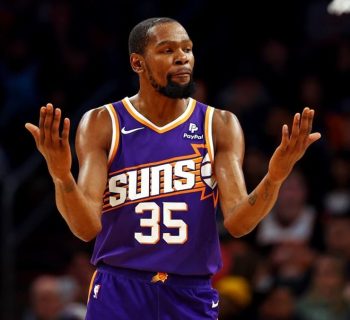NBA
NBA Daily: Lonzo Ball Presents Difficult Decision For Pelicans

Lonzo Ball and the New Orleans Pelicans failed to reach an extension prior to the deadline entering the 2020-21 NBA season – which made this season an important year for the former second overall pick to prove his worth.
But things have not gone according to plan for Ball. Originally acquired by the Pelicans in the Anthony Davis trade, Ball has failed to get going early in the current season. After a few years of what seemed like positive progression in the guard’s shooting stroke, this 2021 has brought up the same questions that surrounded Ball in his earlier scouting reports.
In his first three seasons, Lonzo saw his three-point accuracy increase each year. It started at a 30.5 percent accuracy rate and had jumped to an impressive 37.5 by his third NBA season, 2019-20.
Now well into his biggest campaign yet, he sits below 30 percent for the first time in his career, though there is a lot of time left to see that number increase. If Ball expects to be part of the Pelicans’ long-term plans, improvement is absolutely vital.
Obviously, shooting is a key part of the NBA game today, especially as a guard. Simply put, a player needs to give his team the proper floor spacing needed to maximize their scoring output in an offensively driven league.
That point is especially true for Ball, who needs to prove he can play alongside franchise cornerstones Brandon Ingram and Zion Williamson. Both players are showing the skillset to be a dominant one-two punch for years to come, and the biggest need around them is proper floor spacing.
So even with all the positives Ball brings to the defensive side of the floor and as a playmaker, he cannot fit alongside Williamson and Ingram unless he’s a threat to hit shots from behind the arc. He’s obviously trying to prove himself in that regard as he has never averaged more three-point shots per game than he currently is – and yet, the result has been concerning.
When the two sides failed to reach an extension this offseason, it was abundantly clear that the Pelicans needed to see consistency before they’d tie long-term cap space to the guard. In the early going of the season, Ball is perhaps playing his most inconsistent basketball since his rookie campaign with the Los Angeles Lakers.
But will the Pelicans benefit from not signing Ball prior to the season? Maybe even by getting him to agree to a team-friendly contract if his struggles continue all year?
That seems highly unlikely. First off, not all teams are as desperate for a good shooting guard as the Pelicans are. As previously stated, Williamson and Ingram are in place as the franchise cornerstones. That means every player brought in on a long deal from here on out is brought in with the plan to fit alongside the forward combination.
Most teams with cap space don’t have the luxury of already having two franchise cornerstones in place. That means they are more likely to build around a player they sign – that’s especially true for a player that will hit free agency at a young age as will be the case with Ball.
While there’s almost no way the Pelicans won’t make a qualifying offer to Ball this offseason, it becomes a whole different question when pondering if they’ll match any contract he signs, depending on the financials involved.
He’ll offer significantly more value to another franchise than he might to the Pelicans because of the fit. The New York Knicks, for example, will be among the teams with cap space this offseason, they could see Ball as a player they can build things around moving forward.
That instantly makes him much more valued by the Knicks than he currently would be by the Pelicans. Of course, New Orleans would maintain their right to match the contract, but what good would it be if he isn’t going to fit next to the stars of the team? At no point will he be prioritized over the likes of Williamson and Ingram, which means he’s on a ticking clock to prove he can play alongside them as the team continues its ascension.
The first step could be adjustments to the rotation that sees Ball play more of the traditional point guard role with the rock in his hands. This isn’t easy for head coach Stan Van Gundy to do though as Ingram and Williamson thrive with the ball in their hands.
In all likelihood, Ball’s future in New Orleans will hinge on his consistency as a shooter, which, contrary to popular belief, he has shown the ability to do in the past. First off, confidence and staying engaged are keys; while Ball has struggled with both of those things in his early NBA seasons.
The second is an adjustment to his tendencies. Instead of settling for the spot-up opportunity every time it is presented, Ball would benefit from attacking the closeout more often and maximizing the chances that come from doing so.
Those options are in areas like finding the next open man for a three-pointer, getting to the free-throw line and finishing at the rim instead of hitting the deep shot. If he does these things, he’ll quickly find himself facing less aggressive closeouts and will be more confident in his game. Naturally, those things could lead to a more successful shooting number as the season continues on.
Ball is as talented as they come and it’s understandable why the Pelicans want to slide him in behind the two franchise forwards they have. The unfortunate reality is that time is running out on pass-first guard’s big chance to prove it’s the right move for the Pelicans moving forward.













